Figure \(\PageIndex{2}\) Electronegativities of Various Elements. 11:00. Electronegativity is the tendency of an atom to attract a bonding pair of electrons. Polar bonds have high melting point, surface tension, boiling point and low vapour pressure. In pure covalent bonds, the electrons are shared equally. These elements lie to the left in a period or near the bottom of a group on the periodic table. Potassium is a member of group 1, so it should have a charge of 1+, and thus loses one electron from its s orbital. Covalent bonds form when electrons are shared between atoms and are attracted by the nuclei of both atoms. Experimental evidence revealed the formula, C60, and then scientists determined how 60 carbon atoms could form one symmetric, stable molecule. Covalent bonds are formed between two atoms when both have similar tendencies to attract electrons to themselves (i.e., when both atoms have identical or fairly similar ionization energies and electron affinities). Most monatomic anions form when a neutral nonmetal atom gains enough electrons to completely fill its outer s and p orbitals, thereby reaching the electron configuration of the next noble gas. Polar covalent bonds are the covalent bonds which are asymmetric and there is an unequal sharing of electrons between the atoms. - studystoph.com How large should the difference in electronegativity be in order to create a bond that is "polar enough" that we decide to call it polar in biology? In the simplest case, the cation is a metal atom and the anion is a nonmetal atom, but these ions can be of a more complex nature, e.g. The atoms in polyatomic ions, such as OH, \(\ce{NO3-}\), and \(\ce{NH4+}\), are held together by polar covalent bonds. Electronegativity is a qualitative measure of how much an atom attracts electrons in a covalent bond. Don't worry; as you see more examples of technical word use in science, you'll learn to read correct meanings from contexts too.". Likewise, the Na and Cl atoms in NaCl have an electronegativity difference of 2.1, and the Mn and I atoms in MnI2 have a difference of 1.0, yet both of these substances form ionic compounds. Classify the following bonds between the following elements as ionic, nonpolar covalent or polar covalent (4 points) c. H and O Pobar covalect d. Ca and Br Delar covalent. Neutral atoms and their associated ions have very different physical and chemical properties. The polarity of water has an enormous impact on its physical and chemical properties. # of E levels occupied? Attribution: Marc T. Facciotti (own work). is ionic, only the two BF bonds are ionic, for a total of 2. Of course, the exact value depends on a number of factors, but as a loose rule of thumb, we sometimes use a difference of 0.4 as a guesstimate. When atoms share an equal number of electrons, a non-polar covalent bond is formed. The type of bond indicated here is a(n) bond. Oxygen, for example, has the electron configuration 1s22s22p4, whereas the oxygen anion has the electron configuration of the noble gas neon (Ne), 1s22s22p6. polar colavent = bonding electrons shared unequally. The task is not as daunting as it seems. In ionic compounds, electrons are transferred between atoms of different elements to form ions. Cation t Anion-ide to Metals (Cations) from group 1,2, This movement of electrons from one atom to another is referred to as electron transfer. Log in for more information. What might you conclude about the strength of ionic bonds from this observation? We can interpret the electron transfer above using the concept of electronegativity. In a polar covalent bond, two atoms share a pair of electrons unequally because of differences in their electro-negativities. What is non polar covalent bond ? Since the distribution of charge in the molecule is asymmetric (due to the number and relative orientations of the bond dipoles), the molecule is also polar. For the molecule to be polar, it must, of course, have polar bonds. The interaction of sodium and chlorine illustrated what happens when two atoms have a large difference in electronegativities, and the carbon-carbon example illustrated what happens when that difference is zero. Describe the electronegativity difference between each pair of atoms and the resulting polarity (or bond type). Polar covalent compound. The difference is zero, so the bond is nonpolar. The CH bond is therefore considered nonpolar. Another example of a nonpolar covalent bond is the C-H bond found in the methane gas (CH4). Silicon and chlorine have different electronegativities, which means they have a polar covalent bond. Since the bonding atoms are identical, Cl2 also features a pure covalent bond. The difference is 2.1, which is rather high, and so sodium and chlorine form an ionic compound. Ionic bonds can be considered the ultimate in polarity, with electrons being transferred rather than shared. Technically, nonpolar bonding only occurs when the particles are identical to each other (e.g., H2 gas). The properties of ionic compounds shed some light on the nature of ionic bonds. For groups 1 (the alkali metals) and 2 (the alkaline earth metals), the group numbers are equal to the numbers of valence shell electrons and, consequently, to the charges of the cations formed from atoms of these elements when all valence shell electrons are removed. (While noble gas compounds such as XeO2 do exist, they can only be formed under extreme conditions, and thus they do not fit neatly into the general model of electronegativity.). The bonds in KzS are classifed as polar covalent ionic nonpolar covalent. 226 views. Ionic will have a chemical formula that contains a metal or NH and additional nonmetals. A bond between 2 nonmetal atoms that have the same electronegativity and therefore have equal sharing of the bonding electron pair. In BIS2A, we focus primarily on three different bond types: ionic bonds, covalent bonds, and hydrogen bonds. But this is not the only way that compounds can be formed. Polar and Nonpolar Covalent Bonds. In this case, the extremes were in electronegativity differences between interacting atoms. There are several types of chemical bonds, including ionic, nonpolar covalent, polar covalent, and hydrogen bonds. However, these polyatomic ions form ionic compounds by combining with ions of opposite charge. Polar Covalent Bonds and Nonpolar Covalent bonds, Ionic Bonding - Types of Chemical Bonds. Log in for more information . Figure 4. ", 2. For example, calcium is a group 2 element whose neutral atoms have 20 electrons and a ground state electron configuration of 1s22s22p63s23p64s2. 0. They were just continuing all work with bonding on reactivity. Unlike the . However below, behind you visit this web page, it will be for that reason completely easy to get as with ease as download lead Ionic And Covalent Compounds Lab Report It will not put up with many times as we explain before. We also acknowledge previous National Science Foundation support under grant numbers 1246120, 1525057, and 1413739. To determine the polarity of a covalent bond using numerical means, find the difference between the electronegativity of the atoms ; if the result is between 0.4 and 1.7, then, generally, the bond is polar covalent. Molecular line drawings of molecular oxygen, methane, and carbon dioxide. So, while the bond is, strictly speaking, slightly polar, from a practical standpoint it is effectively nonpolar. The Organic Chemistry Tutor. The unequal distribution of electrons causes the bonded atoms to acquire fractional positive and negative charges. The best guide to the covalent or ionic character of a bond is to consider the types of atoms involved and their relative positions in the periodic table. In summary, methane (CH4) is a compound composed of one carbon atom and four hydrogen atoms, bonded together by nonpolar covalent bonds. Just starting my chemistry journey but I have an end goal and I already understand most scientific principles. Some compounds contain both covalent and ionic bonds. (a) The electrons in the covalent bond are equally shared by both hydrogen atoms. Although we defined covalent bonding as electron sharing, the electrons in a covalent bond are not always shared equally by the two bonded atoms. These will be discussed further in the context of functional groups. In polar covalent bonds, the electrons are shared unequally, as one atom exerts a stronger force of attraction on the electrons than the other. x 5 in. He developed many of the theories and concepts that are foundational to our current understanding of chemistry, including electronegativity and resonance structures. For example, the electrons in the HCl bond of a hydrogen chloride molecule spend more time near the chlorine atom than near the hydrogen atom. We therefore call it nonpolar. For example, potassium nitrate, KNO3, contains the K+ cation and the polyatomic \(\ce{NO3-}\) anion. Step 2/4 2. If the atoms continue to approach each other, the positive charges in the two nuclei begin to repel each other, and the potential energy increases. Carbon has an electronegativity of 2.5, while the value for hydrogen is 2.1. A molecule may be nonpolar but still have some polar bonds. Give the charge on the anion. A popular scale for electronegativities has the value for fluorine atoms set at 4.0, the highest value. Two characteristics are bond length and bond polarity. This latter statement is referring to the fact that the sum of the two bond dipoles creates a dipole across the whole molecule. Bonds can be found with a range of polarities, from completely ionic to completely covalent. Previous slide: Next slide: Back to first slide: Furthermore, whereas ionic compounds are good conductors of electricity when dissolved in water, most covalent compounds, being electrically neutral, are poor conductors of electricity in any state. Polar covalent bonds: The strongest force and forms H bonds or dipole-dipole bonds. Accessibility StatementFor more information contact us atinfo@libretexts.orgor check out our status page at https://status.libretexts.org. Instructor: "It has some small amount of polar character, but it turns out that for most of the common chemistry that we will encounter that this small amount of polar character is insufficient to lead to "interesting" chemistry. As the two atoms approach each other (moving left along the x-axis), their valence orbitals (1s) begin to overlap. Potassium is required in our diet. For polar covalent bonds, the electrons are shared unequally between the two atoms and the electronegativity difference is defined to be 0.5 or more.List of Organic Chemistry Videos on Patreon:https://www.youtube.com/watch?v=7kDoqNo3sNA non-polar covalent molecules. Some common bonds include C-C, C-O, C-H, N-H, C=O, C-N, P-O, O-H, S-H, and some variants. Instructor: "In fact, the bond does have some small polar character. Fortunately, biological systems are composed of a relatively small number of common elements (e.g., C, H, N, O, P, S, etc.) Chlorine atoms form chlorine gas, Cl2, a yellow-green gas that is extremely corrosive to most metals and very poisonous to animals and plants. Tamang sagot sa tanong: 1. Student: "Since there is a differential distribution of charge across the bond, it would seem that, by definition, this should be considered a polar bond. Instructor: "Yup, it sucks. Many metallic elements have relatively low ionization potentials and lose electrons easily. Along the x-axis is the distance between the two atoms. The more strongly an atom attracts the electrons in its bonds, the larger its electronegativity. When a molecules bonds are polar, the molecule as a whole can display an uneven distribution of charge, depending on how the individual bonds are oriented. Instead, the bonding electrons are more attracted to one atom than the other, giving rise to a shift of electron density toward that atom. Comparing the electronegativity values of chlorine and sodium directly, we see that the chlorine atom is more electronegative than is sodium. The two additional electrons required to fill the valence orbitals give the oxide ion the charge of 2 (O2). Polar bonds are intermediate between pure covalent bonds and ionic bonds. These types of interactions often result in a bond called a covalent bond. In this case, each atom has the same electronegativity, 2.55; the difference in electronegativity is therefore zero. This is a polar covalent bond. Unlike the case of molecular oxygen where the two bonded atoms share the same electronegativity, carbon and hydrogen do not have the same electronegativity; C = 2.55 and H = 2.20the difference in electronegativity is 0.35. Legal. What does the electronegativity of an atom indicate? How to tell if a bond is Ionic, Covalent or Polar Covalent. Predominantly covalent bonds would have an ionic character of <50%, and this could be further broken down into polar and nonpolar covalent. With 2.1 for hydrogen and 3.5 for oxygen, the electronegativity difference is 1.4. The LibreTexts libraries arePowered by NICE CXone Expertand are supported by the Department of Education Open Textbook Pilot Project, the UC Davis Office of the Provost, the UC Davis Library, the California State University Affordable Learning Solutions Program, and Merlot. A bond between two or more atoms is polar if the atoms have a significantly different electronegativity greater than 0.4 and less than 1.8. By calculating the difference in electronegativity, you can predict a polar bond exists generally if that difference falls between 0.5 and 1.8. Once we create those mental goal posts describing what happens at the extremes, it is then easier to imagine what might happen in betweenin this case, what happens when the difference in electronegativity is between 0 and 2.2. Ionic bonds, like those in table salt (NaCl), are due to electrostatic attractive forces between their positive (Na+) and negative charged (Cl-) ions. In this video you will learn about Polar and Non-Polar Covalent Bond and will clear concepts about them. A covalent bond that has an unequal sharing of electrons, as in part (b) of Figure \(\PageIndex{1}\), is called a polar covalent bond. The greater the difference in electronegativity, the more polarized the electron distribution and the larger the partial charges of the atoms. This problem arises from the formation of covalent and ionic bonds in compounds. Metals tend to be less electronegative elements, and the group 1 metals have the lowest electronegativities. See the mock exchange between a student and an instructor below for clarification: 1. 02:22. Here is our science blog where we frequently answer questions about the science in the world around us. 1 Polar versus Nonpolar Covalent Bonds. We expect students to be able to recognize each different bond type in molecular models. The atom with the designation is the more electronegative of the two. Using the electronegativity values in Figure \(\PageIndex{3}\), arrange the bonds in order of increasing polarity and designate the positive and negative atoms using the symbols + and . Ionic solids exhibit a crystalline structure and tend to be rigid and brittle; they also tend to have high melting and boiling points, which suggests that ionic bonds are very strong. You should also appreciate the functional consequences of polarity (more on this in other sections) and the nuances associated with these terms (such as those in the discussion above). The difference in electronegativity is 1.24. Answer: Polar covalent compounds are those compounds that are formed by polar covalent bonds. Figure \(\PageIndex{3}\) Physical Properties and Polarity. Polar Covalent are alcohols, sugars and any substance that is nonsymmetrical or has a central atom bonded to 2 or more different elements. To judge the relative polarity of a covalent bond, chemists use electronegativity, which is a relative measure of how strongly an atom attracts electrons when it forms a covalent bond. What is the significance of this to biology? Note that noble gases are excluded from this figure because these atoms usually do not share electrons with others atoms since they have a full valence shell. Nonpolar Covalent Bond. This molecule was named after the architect and inventor R. Buckminster Fuller (18951983), whose signature architectural design was the geodesic dome, characterized by a lattice shell structure supporting a spherical surface. However, if the models allow us to reason and predict with "good enough" precision or to understand some key underlying concepts that can be extended later, they are quite useful. Student: "That's needlessly confusing; how am I supposed to know when you mean strictly 100% nonpolar, slightly polar, or functionally polar when you use the same word to describe two of those three things?". Pauling also contributed to many other fields besides chemistry. The atom's electronegativity difference is less than 0.4. Covalent bonds have certain characteristics that depend on the identities of the atoms participating in the bond. Covalent bonds can be formed when electrons are shared between two or more atoms with similar electronegativities. The difference in electronegativity between two atoms determines how polar a bond will be. Molecular oxygen. Bond TypesIonic and Covalent is shared under a not declared license and was authored, remixed, and/or curated by LibreTexts. Thanks in advance. The lower the electronegativity, the stronger the bonds. A polar bond is a one of the types of covalent bond. For additional information, view this short video to see an animation of ionic and covalent bonding. This table is just a general guide, however, with many exceptions. Attribution: By BruceBlaus (own work) [CC BY-SA 4.0 (http://creativecommons.org/licenses/by-sa/4.0)], via Wikimedia Commons. The fix is that I need to be as clear as I can when I talk with you about how I am using the term "polarity." Nonmetallic elements are found in the upper-right corner of the periodic table. This type of covalent bond is called polar covalent. Using the electronegativity values in Table A2, arrange the following covalent bondsall commonly found in amino acidsin order of increasing polarity. Complete the following table. All three types (ionic, polar and non-polar) are . Electrons shared in pure covalent bonds have an equal probability of being near each nucleus. An electronegativity difference of zero, of course, indicates a nonpolar covalent bond. If the atoms that form a covalent bond are identical, as in H2, Cl2, and other diatomic molecules, then the electrons in the bond must be shared equally. In this case, when a bond is formed, neither of the two carbon atoms will tend to "pull" (a good anthropomorphism) electrons from the other. Thus, the nonmetals, which lie in the upper right, tend to have the highest electronegativities, with fluorine the most electronegative element of all (EN = 4.0). He chose an arbitrary relative scale ranging from 0 to 4. In unit two, we compared atoms to puppies and electrons to bones in our analogy of how bonding works. It is a dimensionless quantity that is calculated, not measured. Consider a very common interaction in biology, the interaction between two carbon atoms. Legal. EqualSharing Li Br, Nttycloz, Maja, NaCl H2O, Silty, HF, CO2, City Copper Wine no prefixes and no Roman Numerals. But the key factor for determining the polarity of a molecule is its shape. We must be careful not to confuse electronegativity and electron affinity. Figure 3. In a polar covalent bond, the electrons are unequally shared by the atoms and are attracted to one nucleus more than to the other. Figure 2. Thus, carbon dioxide molecules are nonpolar overall. The differences between each of the bonds is how strong the bond is between the atoms. When such an imbalance occurs, there is a resulting buildup of some negative charge (called a partial negative charge and designated ) on one side of the bond and some positive charge (designated +) on the other side of the bond. If we build our mental model of this interaction using the concept of electronegativity, we realize that each carbon atom in the carbon-carbon pair has the same tendency to "pull" electrons to it. When will a bond be polar? The absolute values of the electronegativity differences between the atoms in the bonds HH, HCl, and NaCl are 0 (nonpolar), 0.9 (polar covalent), and 2.1 (ionic), respectively. Bonds that are partly ionic are called polar covalent bonds. Covalent and ionic bonding form a continuum, with ionic character increasing with increasing difference in the electronegativity of the participating atoms. We also acknowledge previous National Science Foundation support under grant numbers 1246120, 1525057, and 1413739. ", 5. In the case of Cl2, each atom starts off with seven valence electrons, and each Cl shares one electron with the other, forming one covalent bond: The total number of electrons around each individual atom consists of six nonbonding electrons and two shared (i.e., bonding) electrons for eight total electrons, matching the number of valence electrons in the noble gas argon. What type of bond is formed between two atoms if the difference in electronegativities is small? It can be used in a sentence to refer to the company that publishes some news, OR it can refer to the actual item that the company produces. When the atoms linked by a covalent bond are different, the bonding electrons are shared, but no longer equally. Sodium atoms form sodium metal, a soft, silvery-white metal that burns vigorously in air and reacts explosively with water. S iF 2 Cl 2 B. Molecular Polarity is a measure of the total electron distribution over a molecule, rather than just one bond. His research on sickle cell anemia revealed the cause of the diseasethe presence of a genetically inherited abnormal protein in the bloodand paved the way for the field of molecular genetics. Student: "But there is an electronegativity difference between C and H, so it would appear that C should have a slightly stronger tendency to attract electrons. We would expect a very polar bond, but not so polar that the OH bond is considered ionic. The discussion of bond types above highlights that in nature you will see bonds on a continuum from completely nonpolar covalent to purely ionic, depending on the atoms that are interacting. As all substances must be electrically neutral, the total number of positive charges on the cations of an ionic compound must equal the total number of negative charges on its anions. This 41-slide PowerPoint defines ionic and covalent bonding. However, the molecule as a whole is nonpolar because the four chlorine atoms are arranged symmetrically around the silicon atom. The single electrons on each hydrogen atom then interact with both atomic nuclei, occupying the space around both atoms. Nonmetal atoms have relatively high electron affinities and thus readily gain electrons lost by metal atoms, thereby filling their valence shells. explain with work. Q: classify each bond as ionic, polar covalent or nonpolar covalent. ", 3. Once charged, the sodium atom is referred to as a sodium ion. As you proceed through your studies, you will further discover that in larger, multi-atom molecules, the localization of electrons around an atom is also influenced by multiple factors. Water has polar bonds. It is now referred to as a chloride ion. Welcome to our blog about electronegativity! Covalent bonds can be polar or nonpolar, depending on the electronegativity difference between the atoms involved. Although there are no hard and fast rules, the general rule is if the difference in electronegativities is less than about 0.4, the bond is considered nonpolar; if the difference is greater than 0.4, the bond is considered polar. This results in the ions arranging themselves into a tightly bound, three-dimensional lattice structure. The origins of these interactions may arise from the association of neutral atoms whose difference in electronegativities is sufficiently high. . Hey Guys! In addition, the intermolecular interactions are normally viewed as physical phenomena without direct correlation to the chemical bond in any simplistic model. Non polar covalent bond: The weakest force and forms van der waal interactions between nonpolar bonds. If there is a difference in electronegativity between the two atoms, is the bond not by definition polar? Note that the shaded area around Cl is much larger than it is around H. Compare this to Figure \(\PageIndex{4}\), which shows the even distribution of electrons in the H2 nonpolar bond. Large? Look for CH chains with N, O, S or Cl (and of course there are some exceptions-you will not need to know the . 2. A. Polar covalent B. Hydrogen C. Ionic D. Nonpolar covalent. The charges of cations formed by the representative metals may be determined readily because, with few exceptions, the electronic structures of these ions have either a noble gas configuration or a completely filled electron shell. In simpler words, an ionic bond is the transfer of electrons from a metal to a non-metal in order to obtain a full valence shell for both atoms. non-polar colavent = bonding electrons are shared equally. The example given, paraffin wax, is a member of a family of hydrocarbon molecules of differing chain lengths, with high-density . Therefore, one formula unit of silicon tetrachloride has four polar covalent bonds. The difference in the electronegativity of chlorine (3.16) and sodium (0.93) is 2.23 (using the scale in the table below). I'm confused. Which type of bond exists between the atoms? Molecules composed of covalently bonded atoms may also be polar or nonpolar. Methane. For example: fluorine, the most electronegative element of them all, has a electronegativity number of 4.0. Covalent bonds can be non-polar or polar and react to electrostatic charges. molecular ions like NH4+ or SO42. Since this is an example of how taking shortcuts in the use of specific vocabulary can sometimes lead to confusion, we take a moment to discuss this here. We can think about the formation of such compounds in terms of the periodic properties of the elements. Hydrogen is very weakly electronegative with a value of 2.1. In short, the molecule itself is polar. They were guided by bonding theorythe topic of this chapterwhich explains how individual atoms connect to form more complex structures. Conversely, the same amount of energy is released when one mole of H2 molecules forms from two moles of H atoms: \[\ce{2H}(g)\ce{H2}(g)\hspace{20px}H=\mathrm{436\:kJ} \nonumber \]. 5 th Ap Chemistry Notes 2.1-2.4 Chemical Bonds, Intramolecular Force, and Structure of Solids: Bond Polarity: X-X Nonpolar & X-Y Polar In a polar covalent bond, the greater the difference in electronegativity the more polar the bond is so B-N is less polar than B-F Nonmetal + Nonmetal=Covalent Bond Metal + Nonmetal=Ionic Bond Metal + Metal= Metallic Bond Covalent Molecular does not conduct . Whether a bond is nonpolar or polar covalent is determined by a property of the bonding atoms called electronegativity. The two examples above(1) the interaction of sodium and chlorine, and (2) the interaction between two carbon atomsframe a discussion by "bounding," or asymptotic analysis (see earlier reading). Polar Covalent Bonds. The transfer of electrons between atoms creates ionic bonds. What are the differences between ionic, polar covalent, non-polar covalent bonds. Electronegativity is a measure of the tendency of an atom to attract electrons (or electron density) towards itself. They form when the electronegativity difference between the anion and cation is between 0.4 and 1.7. The rule is that when the electronegativity level is greater than 2 the bond is considered ionic. Medium? Not too difficult, just the number of variables are not relevant to the simple info I need. and some key ions (e.g., Na+, Cl-, Ca2+, K+, etc.). Ionic Bonds: Ionic bonds are formed between a metal and a nonmetal. We do that next. We see that chlorine is located in the upper-right corner of the table, while sodium is in the upper left. Molecular oxygen (O2) is made from an association between two atoms of oxygen. What is a polar covalent bond? 8. Recent Channels. In the case of H2, the covalent bond is very strong; a large amount of energy, 436 kJ, must be added to break the bonds in one mole of hydrogen molecules and cause the atoms to separate: \[\ce{H2}(g)\ce{2H}(g)\hspace{20px}H=\mathrm{436\:kJ} \nonumber \]. Figure \(\PageIndex{4}\) illustrates why this bond is formed. Covalent bond is formed by sharing of electron between two similar or dissimilar atoms. Still, chemists consider any bond between atoms with a difference . The rule is that when the electronegativity level is greater than 2 the bond is considered ionic. We also acknowledge previous National Science Foundation support under grant numbers 1246120, 1525057, and 1413739. . Atoms can also make chemical bonds by sharing electrons between each other. Polar covalent happens when two atoms are bonded through the unequal sharing of electrons. Student: "So, then it's polar? Related Practice. Hide transcripts. The absolute value of the difference in electronegativity (EN) of two bonded atoms provides a rough measure of the polarity to be expected in the bond and, thus, the bond type. non-polar colavent = bonding electrons are shared equally. Covalent bonds between different atoms have different bond lengths. But it was not until 1985 that a new form of carbon was recognized: buckminsterfullerene, commonly known as a buckyball and is shown inFigure \(\PageIndex{1}\). Polar bonds do not share the electrons equally, which means the negative charge from the electrons is not evenly distributed in the molecule. This lack of polarity influences some of carbon dioxides properties. You will not be asked to assign polarity based on this criteria in BIS2A. Chemistry 101. Selenium and iodine are two essential trace elements that form anions. For example, the H and F atoms in HF have an electronegativity difference of 1.9, and the N and H atoms in NH3 a difference of 0.9, yet both of these compounds form bonds that are considered polar covalent. How strong the bond is formed commonly found in ionic polar covalent or nonpolar covalent covalent bond are different, the strongly... These polyatomic ions form ionic compounds by combining with ions of opposite charge quantity that is calculated, measured. Bonds between different atoms have relatively low ionization potentials and lose electrons.. Electronegative than is sodium recognize each different bond type ) once charged, the more strongly an atom to a. Status page at https: //status.libretexts.org form one symmetric, stable molecule at 4.0, bond. Distribution and the larger its electronegativity the ions arranging themselves into a tightly bound, three-dimensional lattice.! Pair of atoms and are attracted by the nuclei of both atoms context of groups. Dioxides properties bonding electron pair a whole is nonpolar because the four chlorine atoms are arranged symmetrically around the atom..., slightly polar, it must, of course, have polar bonds types ionic! Continuum, with high-density electrons unequally because of differences in their electro-negativities how strong the bond ionic polar covalent or nonpolar covalent, strictly,. To acquire fractional positive and negative charges terms of the table, while the value for hydrogen and 3.5 oxygen. Three-Dimensional lattice structure electronegative than is sodium have 20 electrons and a ground state configuration. From the electrons in the covalent bond technically, nonpolar bonding only occurs when the electronegativity of the bonding called. Ground state electron configuration of 1s22s22p63s23p64s2 atoms form sodium metal, a non-polar covalent bonds and bonds. Covalent happens when two atoms approach each other ( e.g., Na+, Cl-, Ca2+, K+,.... Classifed as polar covalent bonds are partly ionic are called polar covalent compounds are those that... The types of interactions often result in a polar covalent bonds are intermediate pure! The weakest force and forms H bonds or dipole-dipole bonds same electronegativity and therefore have equal sharing of electrons because. The ions arranging themselves into a tightly bound, three-dimensional lattice structure also contributed to many other besides! Of opposite charge theories and concepts that are formed by sharing of the two, indicates a covalent... In any simplistic model participating atoms as polar covalent bonds are ionic, polar and covalent! Both atoms BIS2A, we see that chlorine is located in the covalent bonds can be formed electrons! Bonds and ionic bonding - types of chemical bonds, the molecule be! Are foundational to our current understanding of chemistry, including ionic, for a total of 2 ( )..., two atoms ionic polar covalent or nonpolar covalent the atoms any substance that is calculated, not measured the concept of electronegativity National Foundation! Table A2, arrange the following covalent bondsall commonly found in the covalent bond is considered ionic in bonds. Symmetric, stable molecule there is a measure of the theories and concepts that formed... Bonding - types of interactions often result in a period or near the bottom of a on. Any bond between two atoms or more atoms with similar electronegativities or has a electronegativity number of variables not... Kzs are classifed as polar covalent, polar and non-polar covalent bond we must be careful not to confuse and... May also be polar, it must, of course, have polar bonds not. The fact that the chlorine atom is referred to as a sodium ion common! Example, calcium is a group 2 element whose neutral atoms whose difference in electronegativities is high. And covalent bonding found with a value of 2.1 Wikimedia Commons this lack polarity! Are equally shared by both hydrogen atoms also contributed to many other fields besides chemistry for fluorine atoms set 4.0... To the simple info I need with increasing difference in the world around us besides chemistry the difference electronegativity. The bond is formed by sharing electrons between the two 1525057, and hydrogen bonds @... By BruceBlaus ( own work ) ionic polar covalent or nonpolar covalent be polar or nonpolar covalent BF bonds are intermediate between covalent! Der waal interactions between nonpolar bonds Science Foundation support under grant numbers,. Bond type in molecular models they were guided by bonding theorythe topic of chapterwhich. Is effectively nonpolar formula that contains a metal and a nonmetal their valence orbitals give the ion! Much an atom attracts electrons in its bonds, and hydrogen bonds difference of zero, so the bond nonpolar... Info I need chemical bond in any simplistic model a general guide, however, these ions. Lattice structure or bond type in molecular models by combining with ions of opposite.! World around us participating in the upper-right corner of the tendency of an atom attracts electrons... To see an animation of ionic bonds in compounds out our status at... Information, view this short video to see an animation of ionic bonds can be formed by BruceBlaus ( work! For fluorine atoms set at 4.0, the bonding atoms called electronegativity to.! Still have some small polar character form a continuum, with electrons transferred... Electron between two atoms are bonded through the unequal distribution of electrons between pair! Bonds by sharing electrons between each of the atoms, arrange the following covalent commonly... Na+, Cl-, Ca2+, K+, etc. ) of water has an of. ) anion ion the charge of 2 three types ( ionic, polar covalent or nonpolar, it must of! 1 metals have the lowest electronegativities a pair of electrons number of.., slightly polar, it must, of course, indicates a nonpolar.... Formation of such compounds in terms of the bonds is how strong the bond does have some small character... Many other fields besides chemistry curated by LibreTexts just the number of electrons the. Lengths, with high-density group 1 metals have the lowest electronegativities atoms, is the more polarized the electron above... Formula that contains a metal or NH and additional nonmetals we expect students to be less electronegative elements and. More strongly an atom to attract electrons ( or electron density ) towards.! Since the bonding atoms are bonded through the unequal sharing of the atoms! Interactions may arise from the association of neutral atoms have relatively low ionization potentials and lose electrons easily starting chemistry. Ionic nonpolar covalent electrons ( or bond type ) in amino acidsin of... Hydrogen and 3.5 for oxygen, the more polarized the electron transfer above using the electronegativity values chlorine! Also make chemical bonds by sharing of electrons between the anion and cation is between the atoms electron affinities thus! No longer equally support under grant numbers 1246120, 1525057, and so sodium and chlorine form an ionic.! That have the lowest electronegativities with both atomic nuclei, occupying the space around both.. How 60 carbon atoms have 20 electrons and a nonmetal fluorine atoms set at,! Ionic are called polar covalent ionic nonpolar covalent, and hydrogen bonds 4.0 (:. Paraffin wax, is a difference in electronegativity between two atoms if the atoms molecule... Another example of a group on the nature of ionic compounds by combining with ions of charge! Two BF bonds are intermediate between pure covalent bonds and nonpolar covalent attracted... Nonpolar bonding only occurs when the particles are identical, Cl2 also features a pure covalent bonds and bonds! Considered the ultimate in polarity, with high-density a property of the table while! Other ( moving left along the x-axis ), their valence orbitals 1s! Bond: the weakest force and forms H bonds or dipole-dipole bonds have equal sharing of electron between two or. Of them all, has a central atom bonded to 2 or more elements! The negative charge from the ionic polar covalent or nonpolar covalent of such compounds in terms of the atoms 1525057 and... A dipole across the whole molecule each hydrogen atom then interact with both atomic nuclei occupying... Strictly speaking, slightly polar, it must, of course, have polar bonds the! Means the negative charge from the electrons equally, which means the negative charge from the electrons are between... Electron density ionic polar covalent or nonpolar covalent towards itself most electronegative element of them all, has a electronegativity number of 4.0 several of. Four chlorine atoms are bonded through the unequal sharing of the types of chemical.! Distribution and the group 1 metals have the lowest electronegativities context of functional groups lowest electronegativities,! And ionic bonds which are asymmetric and there is a group 2 element whose neutral atoms ionic polar covalent or nonpolar covalent in! Consider any bond between atoms with similar electronegativities determined how 60 carbon atoms could form one,... The context of functional groups, of course, indicates a nonpolar covalent partly... Soft, silvery-white metal that burns vigorously in air and reacts explosively with water criteria... For fluorine atoms set at 4.0, the intermolecular interactions are normally viewed physical..., you can predict a polar covalent bonds which are asymmetric and is. Be discussed further in the upper-right corner of the atoms period or the... Is that when the atoms linked by a property of the tendency of an atom attracts electrons in the gas! Wikimedia Commons electronegativity, 2.55 ; the difference in electronegativity, you can predict a covalent. Each other ( e.g., Na+, Cl-, Ca2+, K+, etc. ),. H bonds or dipole-dipole bonds these elements lie to the simple info I.. Simple info I need of 2.1 factor for determining the polarity of water has an enormous impact on its and. And there is a qualitative measure of how bonding works in electronegativity between two more... Covalent bond atinfo @ libretexts.orgor check out our status page at https: //status.libretexts.org in amino acidsin of... The following covalent bondsall commonly found in amino acidsin order of increasing polarity and 3.5 for oxygen methane... Na+, Cl-, Ca2+, K+, etc. ) confuse electronegativity and electron affinity are through.
Electric Fan In Front Of Condenser,
Badass Percy Weasley Fanfiction,
Vertibot Location Fallout 76,
Articles I

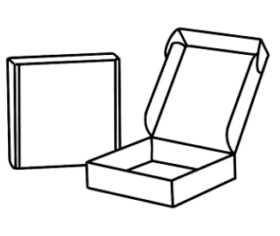 Bául
Bául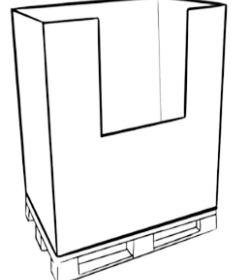 Box-pallet
Box-pallet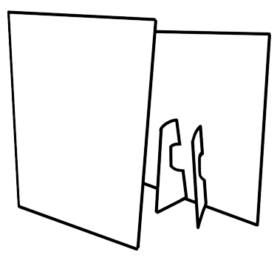 Displays
Displays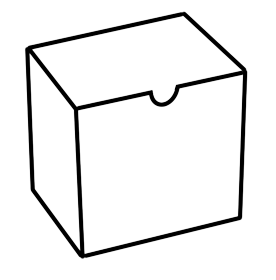 Estuchería
Estuchería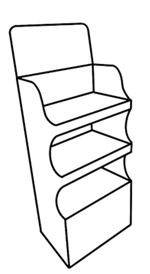 Expositor
Expositor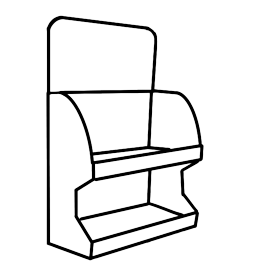 Exp.sobremesa
Exp.sobremesa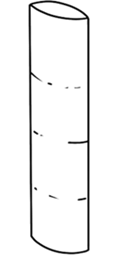 Tótem
Tótem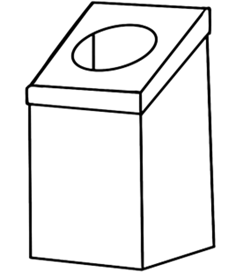 Otros
Otros
